|
Small Intestine, or jejunum and ileum
home/table of contents -
previous -
next
Acupuncture meridians can
present pathway differences. It is common to find a pathway drawn from
the original description in a book, and another connecting in sequence
all the meridian points. In the picture on the left are depicted two
variations of the Small Intestine pathways of the face. Both, as will be
shown later, could have different anatomical correlations.
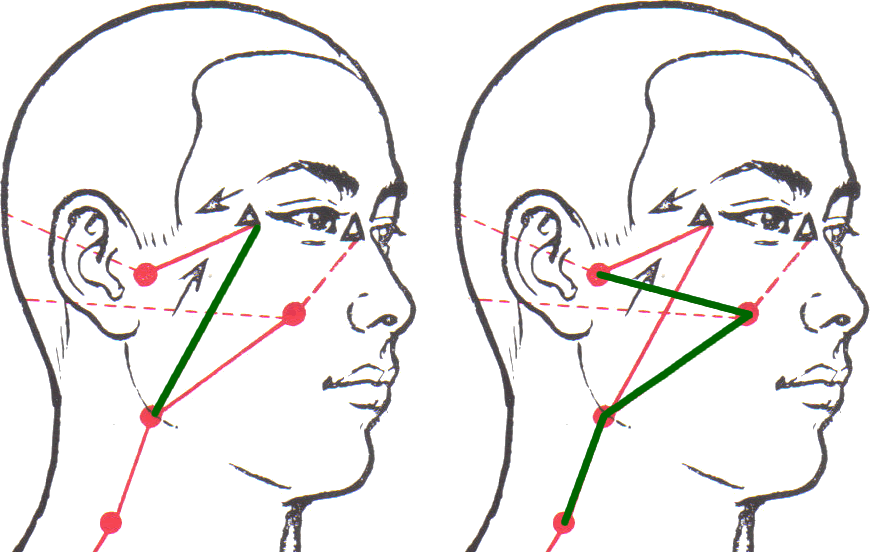
If it is true that the Sanjiao or Triple Burner meridian has the
duodenum-exocrine pancreas as a related organ, in TCM the Small
Intestine meridian pertains to the jejunum and ileum. While the
Gallbladder meridian touches the region in front of the tragus with its
first segment, the Triple Burner (duodenum-exocrine pancreas) does the
same with its last segment, and the Small Intestine meridian ends just
there. Unlike the first two meridians, whose morphologic correspondence
with the related organs is nearly exact, that of the Small Intestine is
undefined, probably because the organ is shaped like a ball-of-thread.
In the picture below, the meridian is depicted in the most common form,
connecting the acupuncture points together.
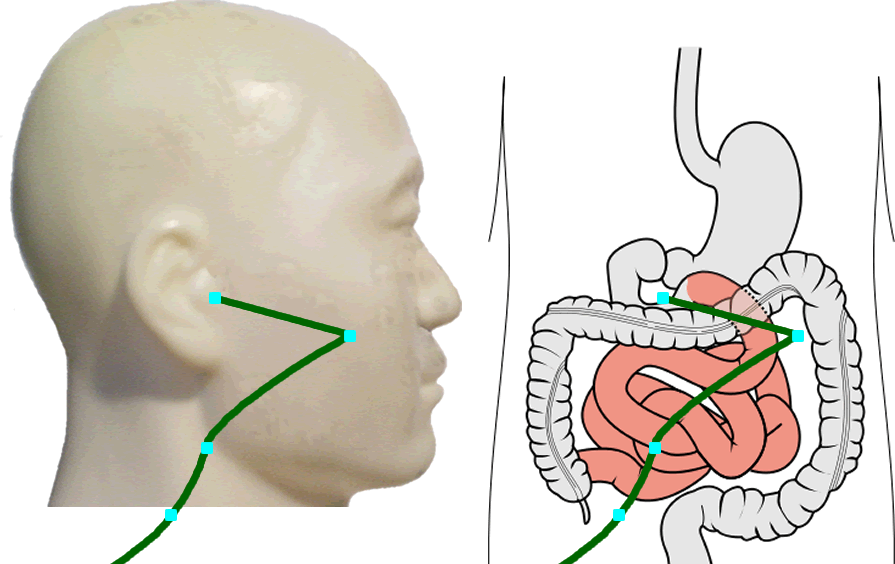
The next picture shows the morphologic
analogy of the face pathway of Small Intestine meridian with the parotid
gland, lying in the mandibular region just under the skin.
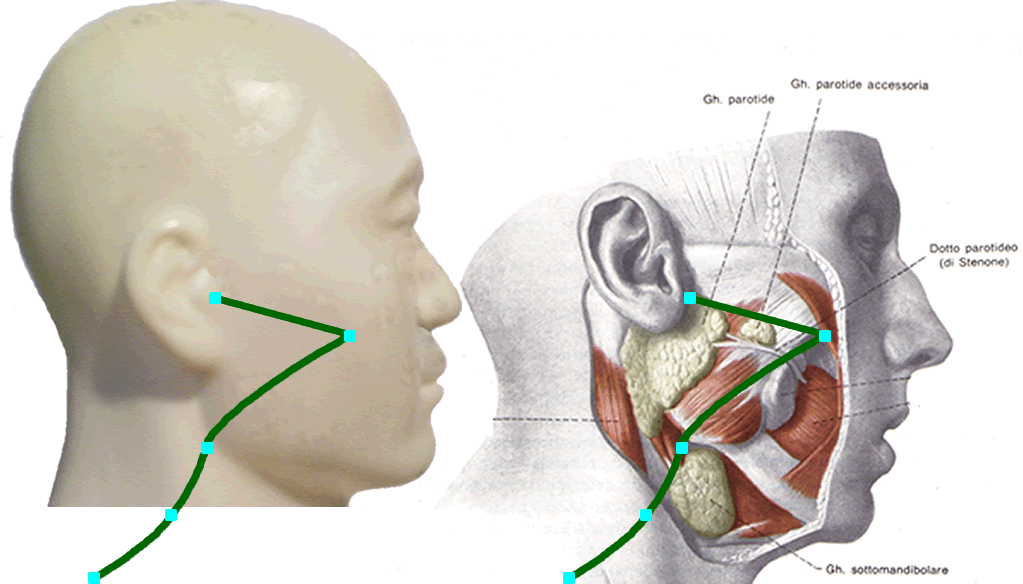
Now let us observe its detailed pathway (picture on the right). It begins at
the external tip of the little finger and continues toward the head with a
centripetal movement. After running straight along the hand, elbow and arm
edge, it arrives at the scapular regions, over which it forms some folds,
more than it will form later on the face, even though the number is
definitely less than those in the pertaining organ (see pictures below).
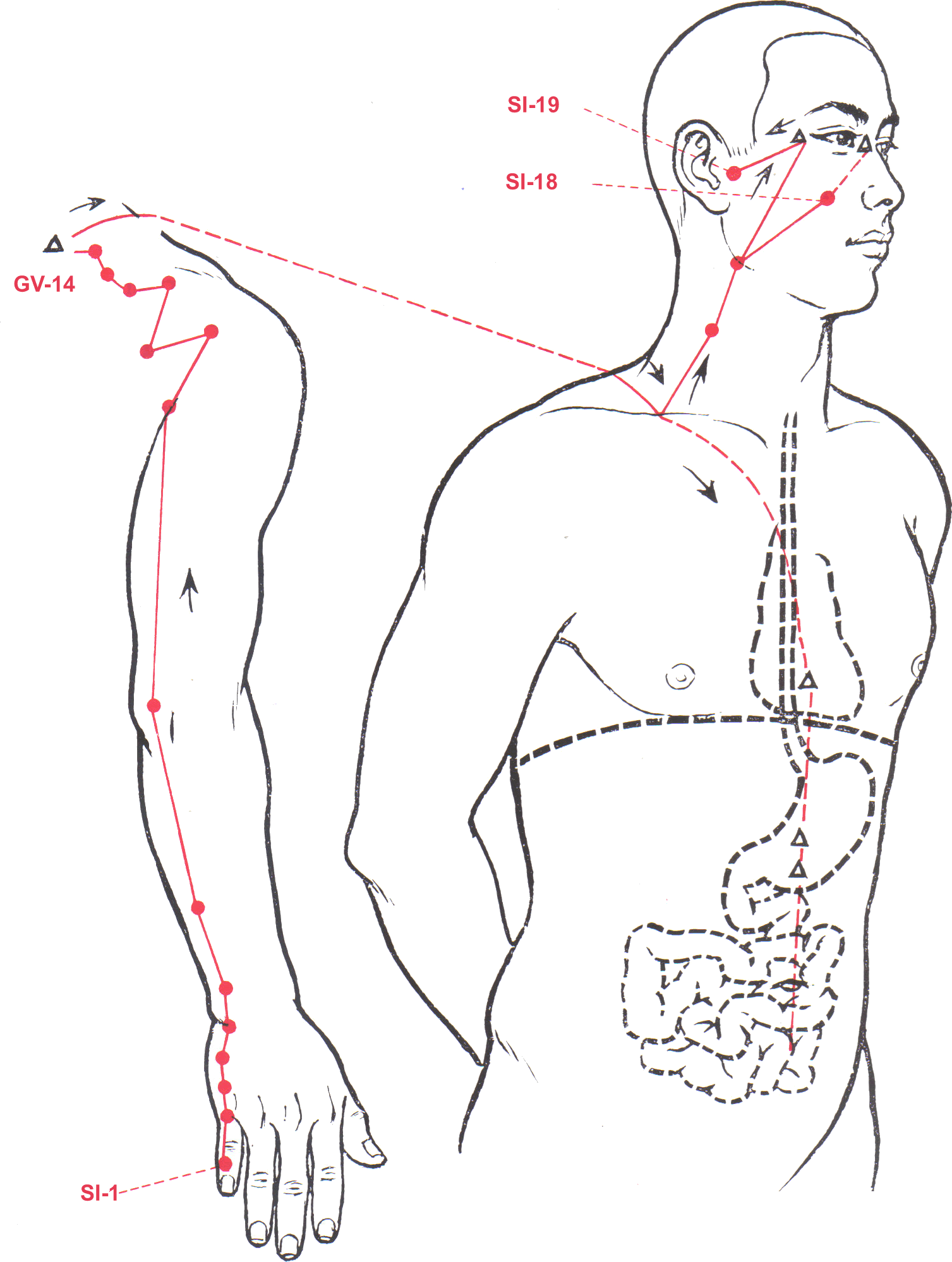
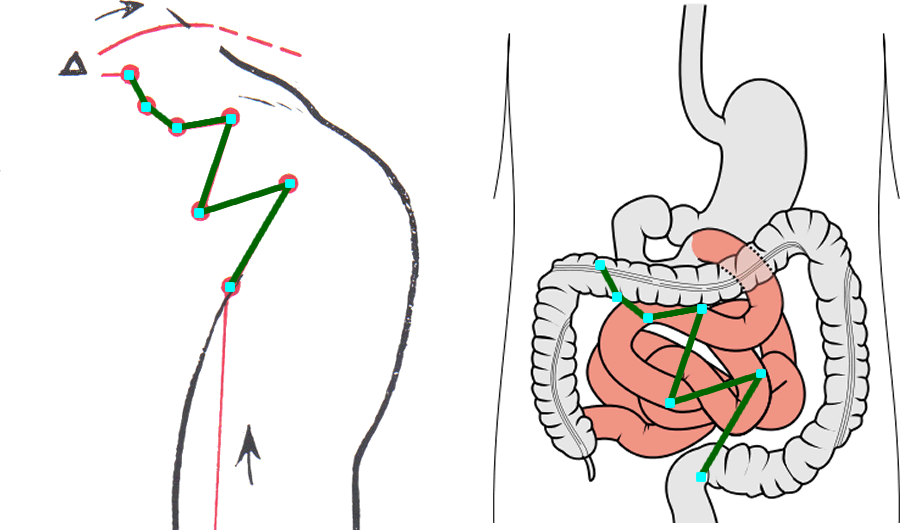
An important analogy exists between the small intestine and arm-shoulder joint,
over which the related meridian passes. In fact, among the abdominal and
thoracic organs, the small intestine is without doubt the one that occupies
the widest space in any direction. If we consider only the jejunum and
ileum, the small intestine can move
as inside a hemisphere, whose centre and support is the
root of the mesentery and the coronal plane passing through it,
and whose dome has the navel as its apex.
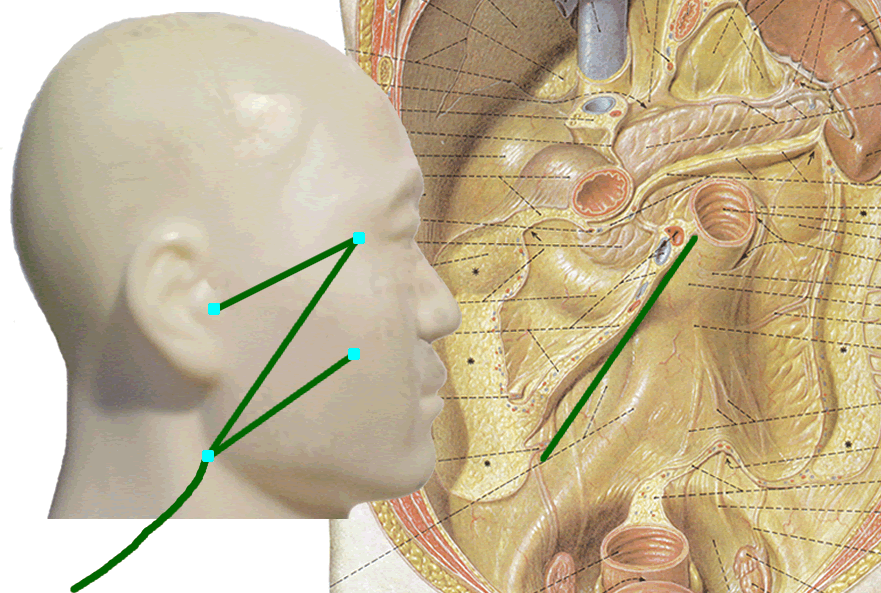
Strangely enough, the joint between the arm and shoulder is the one
whose 3D dynamic morphology is the most similar to a hemisphere.
Furthermore, the "accordion" drawn above the scapula even seems to
point to the meridian's "material" nature, because its repeated
folds could be the meridian's mechanism for stretching itself in
order to follow the arm movements forwards and upwards. Obviously,
this is only a hypothesis that is partially sustained by the
presence of similar shapes with similar functions in other meridians
(see later).
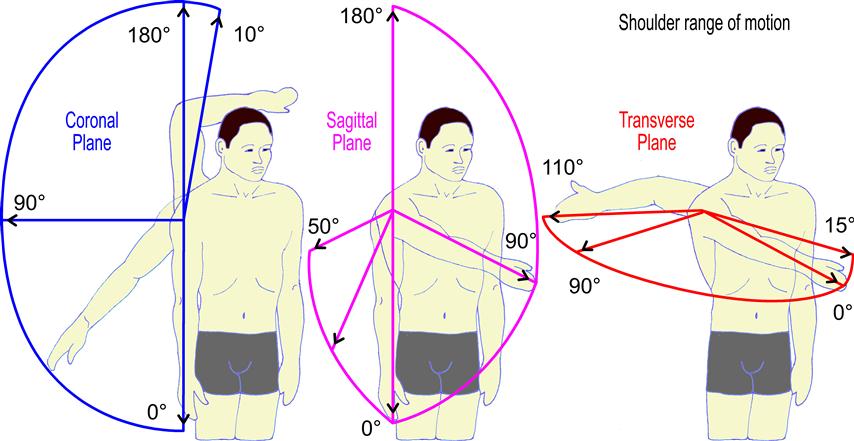
If till now the coincidence between the shape of the small intestine meridian
with the pertaining organ is rather weak, it will become more consistent
after the study of the embryo's intestinal development. As it is illustrated
in the pictures below, the small and large intestine develop from the
primitive midgut by forming a two-limb loop on the sagittal plane (a), which
detaches itself just below the duodenum that is already taking the shape of
a semicircle opened on the left. The loop herniates physiologically and
temporarily into the umbilical cord (b). Making a 270 degrees global
counterclockwise rotation, the loop first becomes horizontal from vertical
(c), then its lower limb takes progressively the shape of the large
intestine, crosses and overcomes the upper limb (d) that has already begun
folding like an "accordion" to form the small intestine, and rotates itself.
The cecum reaches its definitive position in the right iliac fossa (e), so
that the large intestine circumscribes completely the small intestine (f).

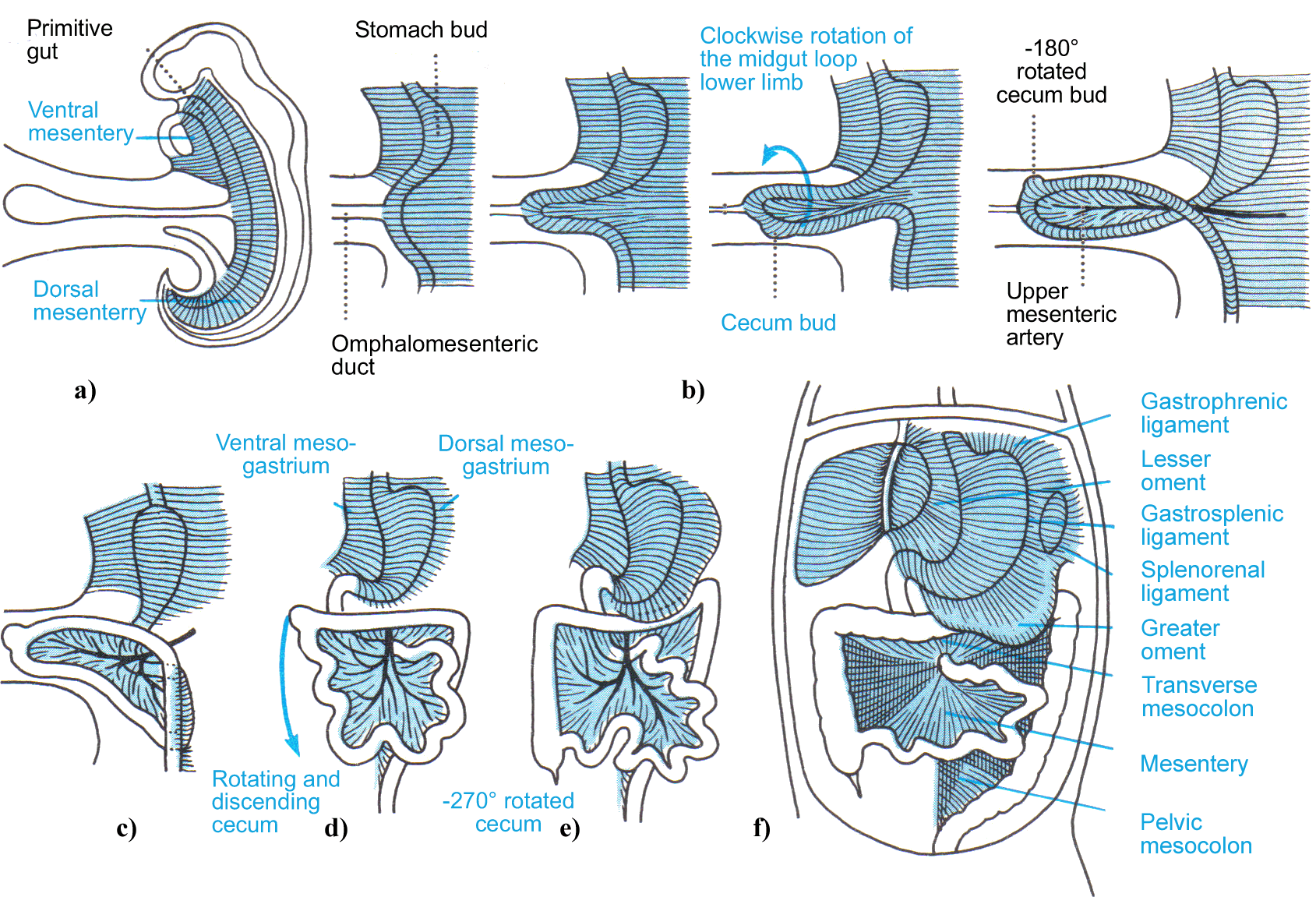
home/table of contents -
previous -
next
|








